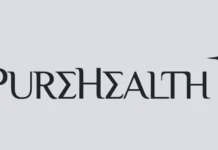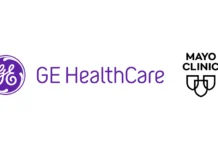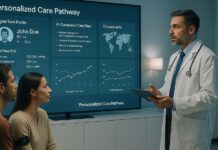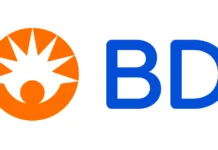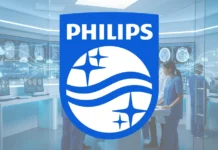Healthcare billing doesn’t have to be a source of stress and confusion for patients or providers. While the complexity of modern medical billing systems can seem overwhelming, understanding key strategies and leveraging the right resources can transform the experience from frustrating to manageable. Effective Patient Billing requires a combination of transparency, technology, and patient-centered approaches that prioritize clear communication and flexible payment options.
The current state of medical billing presents significant challenges for both patients and healthcare providers. Nearly 23 million Americans have medical debt, while 22% of patients report delays because of insurance verification, and 20% said they ran into problems with errors in their medical records or billing information. These statistics underscore the urgent need for improved billing practices that reduce confusion and financial burden.
Understanding the Common Billing Challenges
Medical billing complexity stems from several interconnected factors that affect both patients and providers. Patients often find medical bills confusing and difficult to understand, with less than half of healthcare consumers having a clear understanding of their medical bills. This lack of transparency leads to delayed payments, disputes, and increased administrative costs for healthcare organizations.
The rise in patient financial responsibility has compounded these challenges. High-deductible health plans and inadequate insurance coverage mean that patients are shouldering more healthcare costs than ever before. 37% of adults would not be able to afford a $400 emergency, an amount $1,000 less than the average general annual deductible for single, employer-sponsored coverage. This financial vulnerability makes clear, upfront billing communication essential.
Best Practices for Streamlined Patient Billing
Prioritize Transparency and Clear Communication
Creating patient-friendly billing statements is fundamental to reducing confusion and improving payment rates. Clear billing statements improve patient payment compliance, while itemized charges prevent confusion and disputes. Healthcare providers should ensure their billing statements include practice information, detailed service breakdowns with medical codes explained in plain language, clear payment instructions, and multiple payment options.
Effective communication starts before treatment begins. Practices should verify insurance eligibility upfront and provide patients with written estimates of their financial responsibility. This proactive approach helps patients plan for healthcare costs and reduces billing surprises.
Embrace Technology Solutions
Modern billing technology offers significant advantages for both efficiency and patient satisfaction. Mobile health billing technology elevates patient engagement and simplifies healthcare delivery, with smartphones and tablets allowing both providers and patients to handle billing transactions anytime and anywhere.
Patient portals and digital payment platforms have become essential tools. 85% of people prefer making medical payments electronically, and 78% want all contactless payment options to be a mainstay in the future. By offering online payment portals, mobile-friendly interfaces, and contactless payment methods, healthcare providers can significantly improve the patient experience while reducing administrative burden.
Implement Flexible Payment Options
Financial flexibility is crucial for successful patient collections. Flexible payment options reduce outstanding balances, making it easier for patients to manage their healthcare expenses. Successful practices offer extended payment plans, automatic payment options, and financial assistance programs for qualifying patients.
Healthcare organizations should also consider presumptive eligibility programs that proactively screen patients for financial assistance, reducing the need for extensive collection efforts while supporting patients who need help affording care.

Regulatory Compliance and Best Practices
Maintaining compliance with healthcare regulations is essential for successful billing operations. Fraudulent billing comprises 3% to 10% of all healthcare spending, with costs of non-compliance extending beyond fines to include delayed reimbursements and reduced patient satisfaction.
Key compliance areas include adhering to HIPAA privacy requirements, following proper coding and documentation standards, implementing effective denial management processes, and staying current with regulatory updates. Regular staff training and robust documentation practices are essential for maintaining compliance and avoiding costly errors.
The Future of Patient Billing
The healthcare billing landscape continues to evolve rapidly. Artificial intelligence and machine learning are being integrated into billing systems to improve accuracy and efficiency, while blockchain technology promises enhanced security and transparency in billing transactions.
Value-based care models are also reshaping billing practices, requiring healthcare providers to focus on patient outcomes rather than just service volume. This shift demands more sophisticated billing systems that can track and report on quality metrics alongside traditional financial data.
Actionable Steps for Better Billing Management
Healthcare organizations can take several immediate steps to improve their billing processes:
For Providers:
- Implement comprehensive staff training programs on billing best practices and regulatory compliance
- Invest in modern billing software with automated features and real-time eligibility verification
- Develop clear, patient-friendly billing statement templates
- Create flexible payment plan options and financial assistance programs
- Establish effective communication protocols for discussing financial responsibility with patients
For Patients:
- Review insurance benefits and understand your coverage before receiving care
- Ask for cost estimates upfront and clarify any confusing charges
- Take advantage of online patient portals and digital payment options
- Communicate with billing departments immediately if you experience financial difficulties
- Keep detailed records of all medical expenses and insurance communications
Conclusion
Navigating patient billing successfully requires a comprehensive approach that combines transparency, technology, and patient-centered policies. While the complexity of healthcare billing presents ongoing challenges, healthcare organizations that prioritize clear communication, leverage modern technology, and maintain strict compliance standards can significantly improve both patient satisfaction and financial performance.
The key to reducing billing headaches lies in proactive communication, flexible payment solutions, and continuous adaptation to evolving regulations and patient needs. By implementing these best practices and staying informed about Medicare billing requirements, healthcare providers can transform patient billing from a source of frustration into a streamlined process that supports both excellent patient care and sustainable business operations.






